QUAD ARTERA PRE Review – Simply First
Quad’s Artera PRE is a simple preamplifier dedicated to analogue purity. Noel Keywood listens. Read our QUAD ARTERA PRE Review.

It’s so simple, and I had problems understanding it! But it isn’t. Quad’s new Artera PRE preamplifier is a complex analog design, made apparently simple because there’s no digital. There are no digital inputs and no app to control it, so no iPhone or iPad is needed. Instead, Artera PRE is a purist design that zeroes in on analog perfection with remote control.
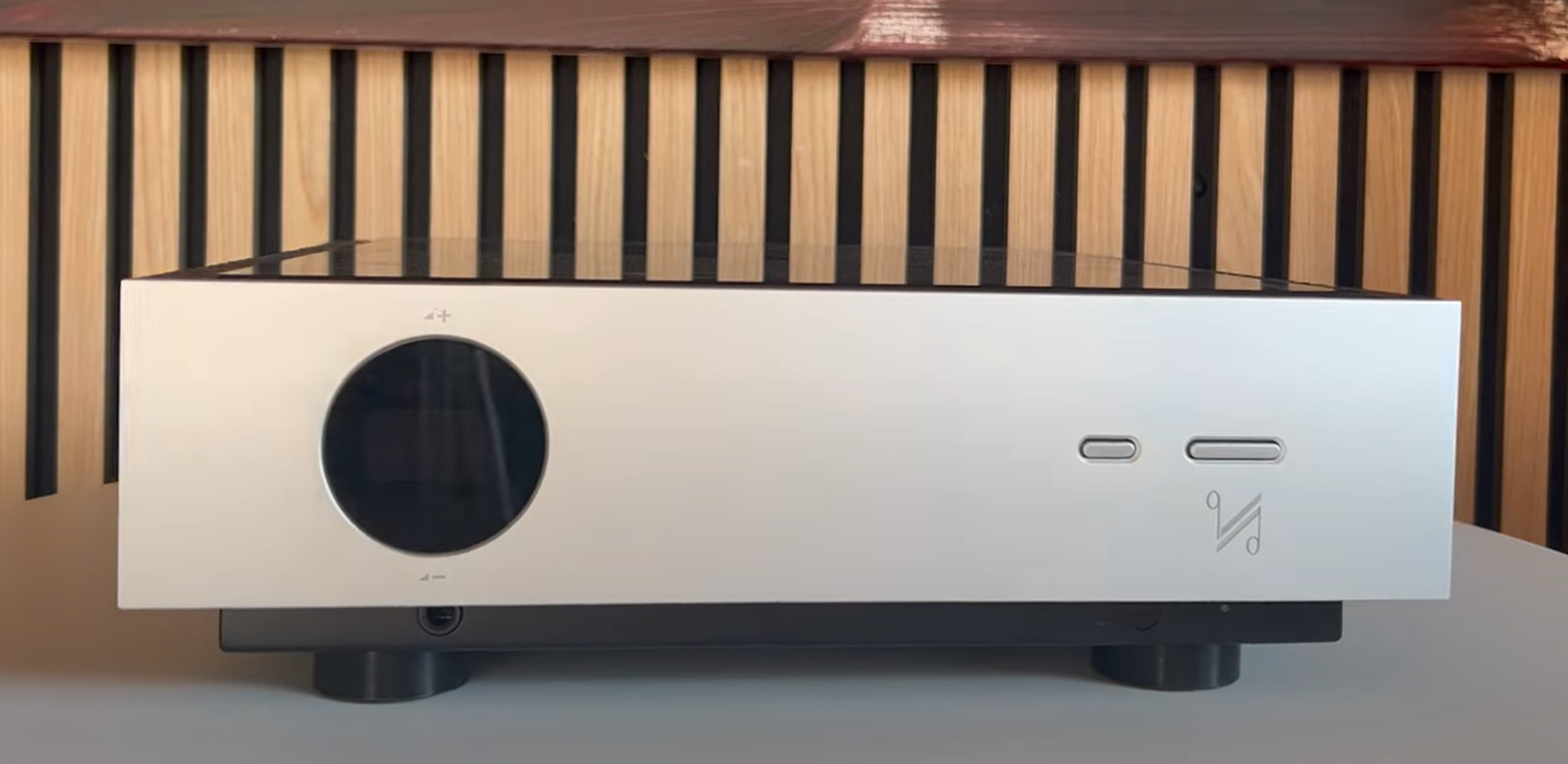
Quad’s literature understandably shows Artera PRE is linked to their Artera power amplifier, but it will drive any power amplifier through ordinary phono leads (unbalanced) or XLR (balanced) cables. There’s a phono stage that accepts both moving coil (MM) or moving coil (MC) cartridges for vinyl enthusiasts, plus a l/4in (6.35mm) headphone output jack lurking beneath the front panel. You don’t get Bluetooth digital input for play from a ‘phone or tablet, nor Bluetooth output to Bluetooth-equipped headphones – absolutely no digital here!
Artera PRE is built to a standard that is impressive. It weighs 7.8kg, signalling there’s a lot inside. And much of it lies in the linear power supply with its heavy toroidal power transformer. So no universal switch-mode supply, instead a trad. power system factory set to cope with 100V up to 230V according to country of use. Stand-by draws less than 0.5 Watts, so press the remote’s Off button and it won’t affect your power bill or contribute to global warming (!). For hi-fi buffs, the significance is better sound quality, no interference, and better long-term reliability – switch modes being a break-down waiting to happen.
Artera PRE has three RCA phono socketed (unbalanced) line inputs plus one pair of XLR socketed (balanced) inputs for the best quality. There’s also a single Phono input for turntables with an earth terminal.
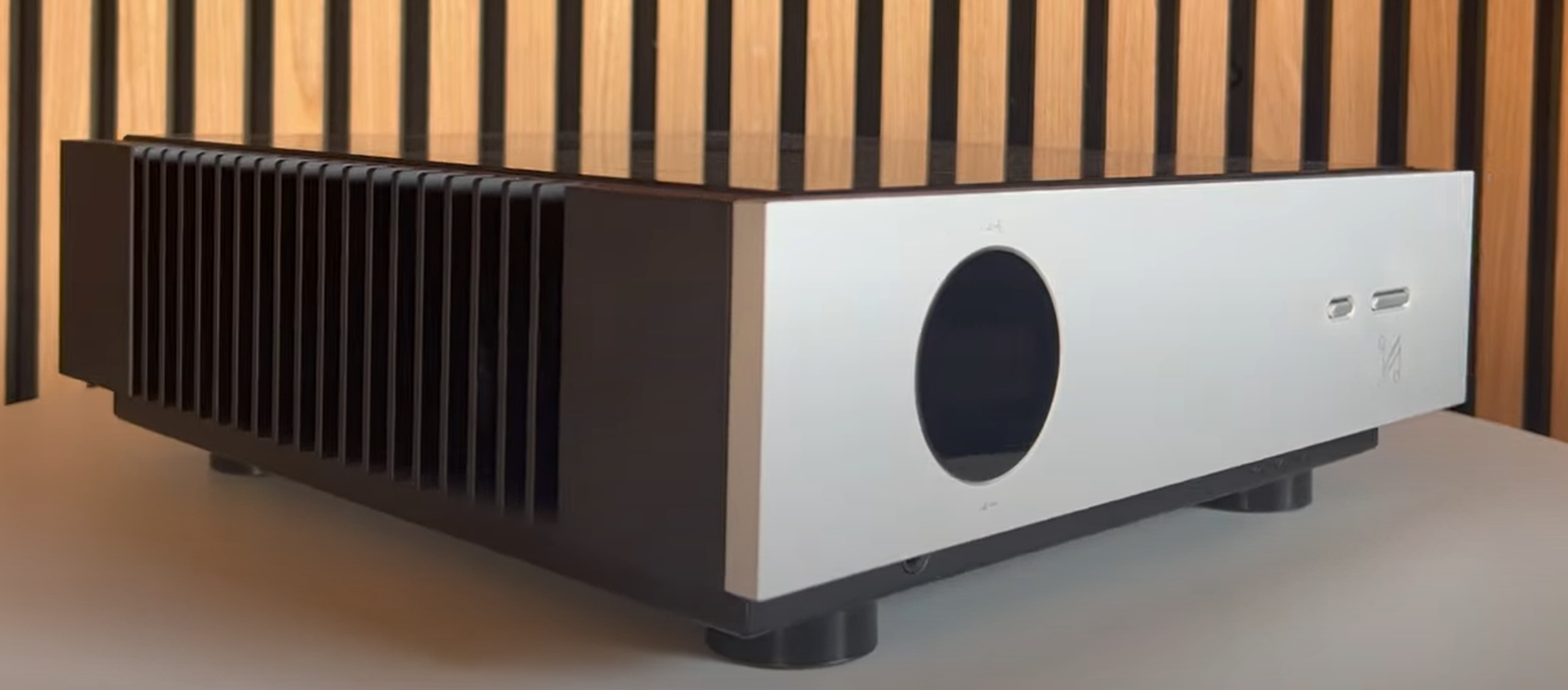
Outputs are RCA phono socketed (unbalanced) outputs labeled PRE plus XLR (balanced) outputs, both with variable volume. An AUX output provides a fixed output level unaffected by the volume control.
And that’s it! Where preamps are these days festooned with inputs, Artera PRE keeps it sweet and simple. The idea is that for the highest quality, you choose the external source of your desire, which these days will most likely have an ESS Sabre32 series DAC chip inside or a Chord Electronics DAC – both of which out-run most else.
The rock-solid machined 17mm thick side panels that look like heat sinks – but stay cold – are complemented by a 10mm thick front panel, both surrounding sheet steel casework. Width is 320mm, height 105mm, and depth 320mm; taking into account protruding rear plugs, it needs a 14in (356mm) deep shelf, but a 19in rack has plenty of rear space.
It comes with a heavy glass top cover to keep dust out.
Two small front buttons control power and select input. Volume and a host of other settings, including gain, balance, and tilt of each input, are pre-set on the remote control only. Hence, the clean-looking front panel but lacks manual overrides – especially for volume. The remote is vital, so it is best not to lose down the back of the settee.
An awkward issue was the need to always have the remote with me to change volume, something I find irritating when changing LPs because volume must go down then up at the system, and using a remote for this rather than a manual volume control is a hassle.
The Artera PRE’s complexity arises in a relatively unusual arrangement where a wide range of conditions can be pre-set for each input. Each input is programmable, and for this, I had to go to the Prog button on the remote and get to work, the reason being there is a lot that can be set.
A headliner is the reintroduction of Quad’s tilt control, first seen in 1982 on the Quad 34 preamplifier. This gently alters overall spectrum balance: you tilt one way or the other, in steps, for a warmer sound or a less warm one. Tilt is a simple and elegant replacement for bass and treble controls, suiting a system that is pretty well balanced in the first place and just needs some tiddling. Here, you make one simple adjustment. Backing up Tilt is Bass Boost measurement showed quite strong increases in bass. Quad says it adds bass to small loudspeakers. An EQ Off option makes quick A-B comparison possible.

Then there is a strongly influential pre-set gain control that provides a large amount of boost or cut, so all sources can be matched in to give equal volume level when selected: jumps in volume – up or down – can be dialled out.

Channel balance can also be set – most useful with LP for pickup cartridges where imbalance is not uncommon, but also for loudspeakers. If the loudspeakers are out, however, compensation will have to be applied at each input.
All of this means there is, in truth, digital inside, in the form of a microprocessor that makes these adjustments, with a factory reset option and firmware version (a dealer-only update). The analog circuitry is controlled by small-signal relays that you can hear clicking away, and the volume control is an analog switched resistor network – the best solution available. So Artera PRE isn’t quite as simple as it seems. It even has input signal sensing to know which input is active, and the front panel display shows whether it sees a signal or does not at any input selected. If it doesn’t then – er – perhaps the source needs to be switched on – or given a thump. Just don’t do this to the turntable!
The ability to pre-set gain on each input especially affects the Phono stage. It can be tweaked to suit any cartridge, including super expensive low output moving coils; measurement showed there’s so much gain no MC cartridge is unsuitable. Also, there is almost no noise. The input impedance is 100 Ohms, fixed. I saw straight away on unpacking the Artera PRE that its mains input lacks earth, making it fully floating – and that would be to ensure an unbreakable hum loop could not exist because such high gain can be troublesome where earthing isn’t optimized. The Artera PRE does not produce hum, and if hum appears from outside components, it can be eradicated by removing an earth connection.
All moving magnet cartridges (MMs) can be accommodated, too; input impedance is standard at 47k Ohms, but there are no capacitance options.
SOUND QUALITY
I connected Artera PRE to the fixed XLR inputs of our Creek Evolution I00A amplifier, acting as a power amplifier. It was connected to our Martin Logan ESL-X hybrid electrostatic loudspeakers through Chord Company Signature XL Reference cables. Sources were Chord Electronics M-Scaler and Dave DAC to send in a clean CD, an Oppo BDP- 205D acting as a CD transport. I span LP with our Timestep Evo modified Technics SL-I2I0 Mk2 Direct Drive turntable, with SME309 arm and Ortofon Cadenza Bronze MC cartridge.
Spinning uncompressed CDs it soon became apparent that Artera PRE was conveying the ability of M-Scaler and Dave with easy ability.
In essence, it has a wonderfully easygoing analogue quality with tremendous stage depth, but it is not warm, so much as crystal clear. With Jan Akerman’s Am I Losing You, long echo trails from guitar were obvious, making for a deliciously atmospheric sound, Akerman’s vocals center stage having a gravelly presence. It was an enveloping and gripping sound.
With hi-res from Dave, from a Mac BookPro running Audirvana Plus, Diana Krall’s Narrow Daylight in both 24/96 PCM and DSD format was again crystal clear yet easy on the ear, the sound stage open and spacious due partly to a strong sense of depth. Plucked acoustic bass had plenty of power, too.
Classical music fared just as well, the Minnesota Orchestra playing Rimsky-Korsakov’s The Snow Maiden: Dance of the Tumblers (24/96), laid out clearly in front of me, good light playing on strings and horns to make them clear and detailed.
Spinning LP, the Artera PRE was again tonally neutral, but at the same time, its crystal clarity removed warmth from Mark Knopfler’s True Love Will Never Fade on Kill to Get Crimson (I80gm), and I felt it more easygoing than revealing. The same is true for Hugh Masekela and Uptownship, from his Hope LP (Analogue Productions I80gm). Masekela’s trumpet was there in all its fluid glory from this man, and the busy side work flooded through, but there was some small sense of opacity. The LP stage is very good – if not definitive.
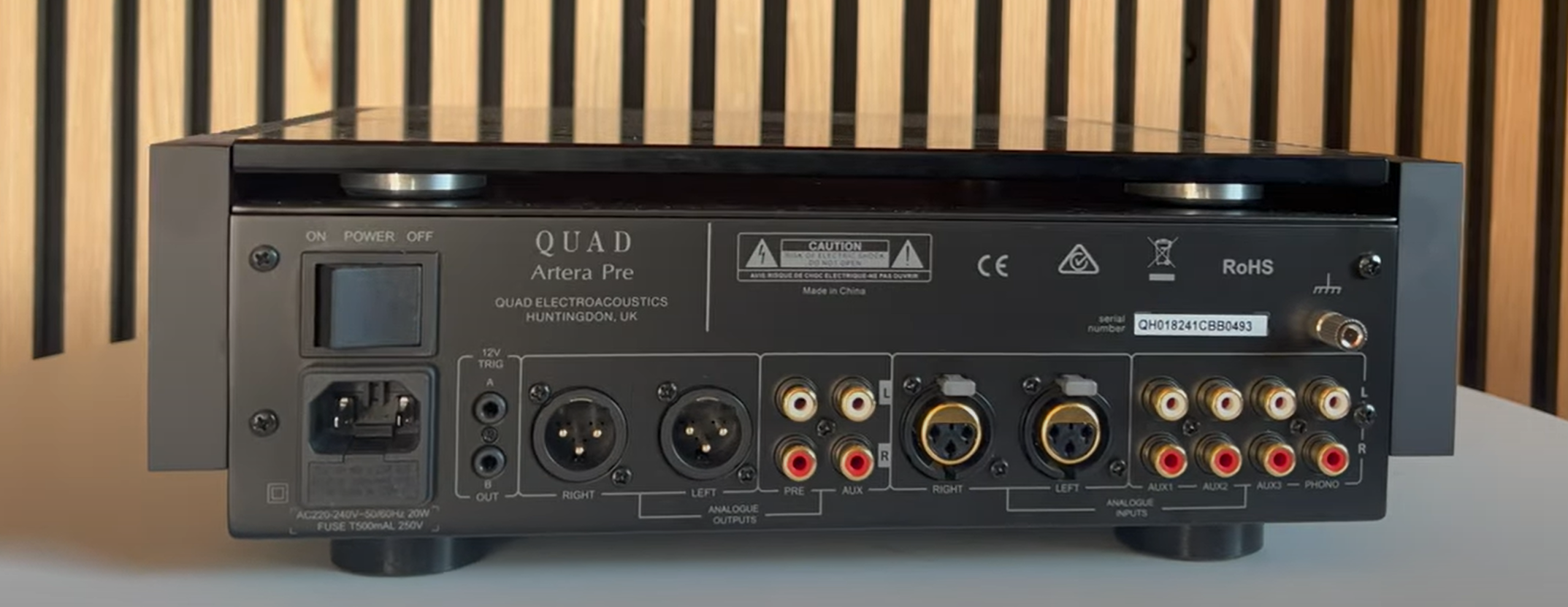
Applying Tilt did nicely change the tonal balance in a gentle fashion, the first of three low-frequency boost settings adding gentle warmth, for example, whilst the first treble boost setting brought forward detail without making the treble sound sharp.
CONCLUSION
Artera PRE is a deceptively simple preamplifier – inside, it is both audiophile and complex in what it can do, having microprocessor control and purist relay switching to give an all-analogue preamplifier capable of coping with whatever is plugged in. The absence of digital input or Bluetooth may be a no-no to some, but both can be fed in from outside sources if need be. The sound quality was exquisite: pure analog smoothness and depth, the phono stage being supremely quiet if a tad laid back. Overall, though, it is a lovely all analogue preamplifier in pure Quad tradition.
MEASURED PERFORMANCE
Frequency response measured flat (-1dB) from 5Hz to 100kHz via the preamplifier, through all inputs and unaffected by volume control setting. Output overload was low at 3V from the phono socket PRE line outputs and 6V from the XLR outputs, but this is still enough for all power amps (2V max) with distortion very low at 0.007% at 1V in/2.4V out.
Gain (0dB pre-set) measured x2.4 (7.6dB) via the phono socket Aux line inputs to phono socket PRE line outputs and for (balanced) XLR in to out. From RCA phono socket Aux line input to XLR output, it was x2 (6dB). These are common values but can be varied substantially by +/-8dB on each input.
The ability to pre-set gain especially affects the Phono input. Default (0dB) gain with MC selected was very high at x4000 (72dB) overall (64dB for phono stage alone) but rose to x9400 (79dB) with +8dB extra gain dialed in – more than enough for even the lowest output MC cartridges. With MM default gain measured x450 (53dB), or a high 45dB for phono stage alone (40dB is common), again adjustable by +/-8dB.
Input noise with MC was exceptionally low at 0.065 muy V: hiss will be inaudible even with low output moving coil cartridges. It was low for MM too.
FREQUENCY RESPONSE
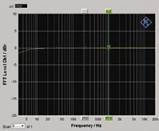
DISTORTION
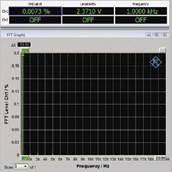
Input overload for MC and MM was satisfactory at 7mV and 64mV, respectively. Frequency response (RIAA equalization accuracy) measured flat from 12Hz-20kHz (-1dB) via MM and MC; there is no warp filter, but gain rolls down below 12Hz to provide -7dB attenuation at 5Hz to lessen the effect of LP warps.
The Artera PRE measured well in all areas. It has massive gain if +8dB is selected, and the Phono stage is very quiet.
QUAD ARTERA PRE
When you purchase through links on our site, I may earn an affiliate commission. Here’s how it works.









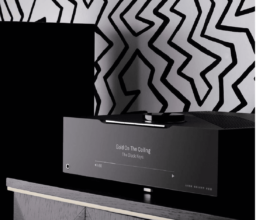
I bought the Quad Artera preamplifier as I needed a volume control for my new Elac Navis arb-51 active speakers. I’ve now owned the unit for 8 weeks and I’m very impressed with the sound quality and the flexibility and control over the sound. I’m running the TV through it as well as my Yamaha cds 2100 sacd player for my sauce. The overall synergy of the system is more than I could have ever of hoped for. The sound is big, open, clean and clear allowing the system to truly sing and I’m hearing details big and small on my cds i didn’t even know was there. The tilt control is truly perfect to my ears and for my needs. The sound is never hard, harsh or bright no matter what the position of the tone control or the bass cut or boost. I give the Quad 10 out of 10 for sound and flexibility with only one very small minus. The menu screen is very small to view from my seating position of 2.5m but is certainly no deal breaker. As for the value of the unit… I would happily pay twice as much as the asking price of £999.00 and still be very happy! For me it’s everything and so much more than I could have wished for and finally put an end to the problems I have with poor room acoustics!!! Absolute bargain and very highly recommended. Thank you Quad for bringing my music and room to life.
Just a note regarding the volume control, it does have volume control on the front panel, touch sensitive on the round display.
Do you still have it?
That you need to use the remote for tuning up the sound, is simply not true, you can use the fingertouch screen on the preamb til increase or decrease the sound. It is indeed a wonderful pre amb and the tilt just put the extra special sugar to the product
MTK
This review is by Noel Keywood (formerly publisher/editor/chief reviewer of HiFi World – sadly no longer published)
He knows his stuff.
I have lots of Quad hi-fi – it is simply the best.
(Quad ESL Quad Artera power amp Quad Vena Quad S2 and more)